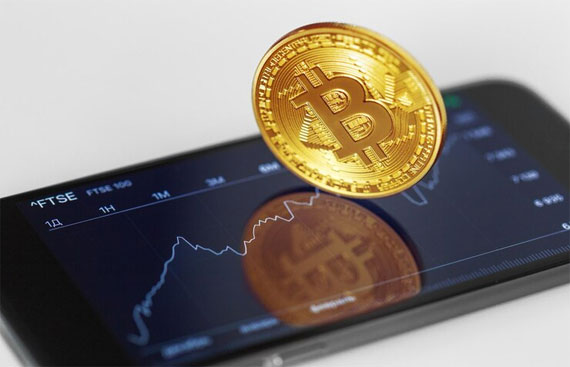Understanding Bitcoin's Market Dynamics: A Deep Dive into Price Movements and Trends

Bitcoin's market dynamics are complex, driven by factors such as supply and demand, liquidity, volatility, sentiment, and trends. Understanding these dynamics is crucial for investors and traders to navigate the cryptocurrency market effectively. This article explores the key aspects of Bitcoin's market dynamics, providing insights into its price movements and trends. Quantum Ai offers a platform to learn from educational experts about the factors influencing Bitcoin's market dynamics.
Bitcoin's Supply and Demand
Bitcoin's delivery and demand dynamics play a crucial role in determining its fee. Unlike conventional fiat currencies, Bitcoin has a capped delivery, with the simplest 21 million cash ever to be mined. This shortage is an essential factor of Bitcoin's design and is programmed into its protocol. The confined delivery of Bitcoin means that as calls for the cryptocurrency will increase, its rate has a tendency to rise. This courting among delivery and demand is a key thing using Bitcoin's rate actions.
The demand for Bitcoin is encouraged by using different factors, together with its perceived fee as a store of fee, its application as a medium of exchange, and its potential as a hedge towards inflation. Factors consisting of accelerated adoption by institutions and retail traders, geopolitical activities, and macroeconomic conditions can all affect demand for Bitcoin. Conversely, factors that lessen the attractiveness of Bitcoin, together with regulatory crackdowns or safety breaches, can lead to a decrease in call for and a next drop in price. Understanding those delivery and demand dynamics is essential for investors and buyers looking to navigate the Bitcoin market successfully.
Market Liquidity
Market liquidity refers to the ease with which an asset may be sold or offered without inflicting widespread price movements. In the context of Bitcoin, liquidity performs a vital role in figuring out the performance of the market. A fairly liquid market permits buyers to enter and exit positions easily, without considerably impacting the price of Bitcoin. Factors that have an effect on Bitcoin's liquidity include buying and selling quantity, the wide variety of market members, and the depth of the order e-book.
Bitcoin's liquidity can range relying on the exchange and market conditions. Major exchanges typically have higher liquidity than smaller exchanges, making them extra appealing to traders trying to execute massive orders. Additionally, market liquidity can be influenced by external elements consisting of regulatory developments or macroeconomic activities. Traders and investors need to remember market liquidity while trading Bitcoin, as low liquidity can cause slippage and expanded trading expenses.
Price Volatility
Bitcoin is understood for its charge volatility, with its fee often experiencing large fluctuations over quick periods. This volatility is prompted with the aid of various factors, inclusive of marketplace demand, regulatory tendencies, macroeconomic trends, and investor sentiment. The restricted delivery of Bitcoin, coupled with its growing adoption, can cause speedy rate actions in reaction to adjustments in demand.
Bitcoin's rate volatility presents opportunities and risks for buyers and investors. While excessive volatility can bring about sizable income, it additionally increases the chance of giant losses. Traders want to employ threat control strategies, together with forestall-loss orders and right function sizing, to mitigate the dangers related to Bitcoin's volatility. Additionally, buyers ought to have a long-term angle and be prepared for price fluctuations inside the brief term.
Market Sentiment and Psychology
Market sentiment and psychology play a large role in shaping Bitcoin's price actions. Market sentiment refers to the overall mindset of buyers and buyers towards an asset, along with Bitcoin. Positive sentiment can force prices higher as buyers are greater inclined to buy, at the same time as negative sentiment can result in fee declines as investors look to promote. Factors that have an impact on market sentiment include information headlines, social media discussions, and market tendencies.
Investor psychology additionally plays a critical position in Bitcoin's rate dynamics. Behavioral biases, which include worry of lacking out (FOMO) or worry, uncertainty, and doubt (FUD), can cause irrational selection-making and make a contribution to rate volatility. Understanding these mental elements is vital for investors and buyers to avoid making emotional decisions that would lead to losses. Additionally, marketplace sentiment and psychology may be analyzed using sentiment signs and gear, which include the Fear and Greed Index, to gauge marketplace sentiment and make extra informed trading decisions.
Market Trends and Patterns
Analyzing marketplace tendencies and styles is essential for investors and traders seeking to recognize Bitcoin's price actions and make informed choices. Market traits seek advice from the general path wherein the market is moving, which include an uptrend or downtrend. Identifying tendencies can assist traders determine the first-class time to go into or go out as an alternative. Market patterns, consisting of head and shoulders or double tops, also can offer insights into destiny charge movements.
Technical evaluation is normally used to discover market tendencies and patterns. Traders use diverse tools and signs, inclusive of moving averages, Relative Strength Index (RSI), and Fibonacci retracement stages, to investigate price charts and perceive potential buying and selling possibilities. While technical evaluation can be a treasured tool, it is important to apply it alongside other types of evaluation, inclusive of essential evaluation, to make well-rounded buying and selling decisions.
Conclusion
In conclusion, Bitcoin's market dynamics are influenced by a variety of factors that interact in complex ways. Supply and demand, liquidity, volatility, sentiment, and trends all play a role in shaping Bitcoin's price movements. By under- standing these dynamics, investors and traders can make more informed decisions and navigate the crypto- currency market with greater confidence.
